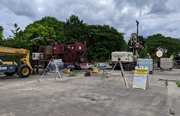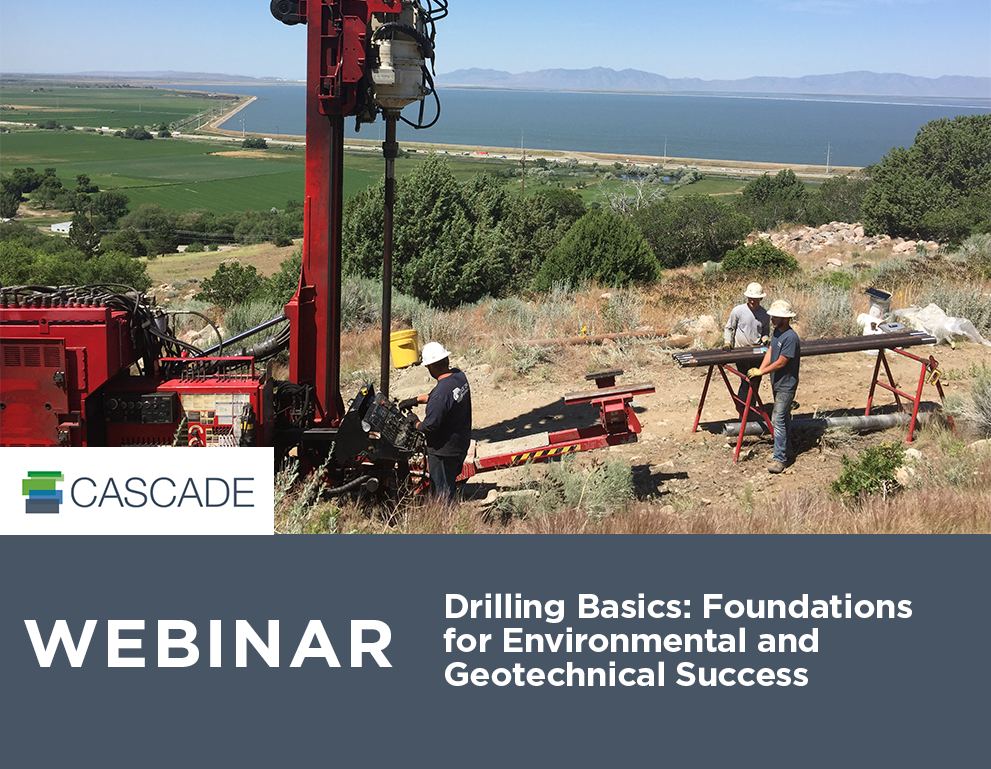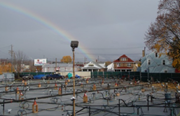Mastering Over Water Drilling: What You Should Know about Three Common Over Water Vessels
By: Matt Ficeto, Dan SpencerDrilling over water is a different experience compared to drilling on land. In this article, we will provide insights into the unique challenges and considerations that come with over water drilling, specifically when it comes to vessel selection. Over water drilling serves as the cornerstone for obtaining geotechnical insights beneath the water's surface, facilitating the development of water-related infrastructure projects, addressing environmental contamination, and supporting the foundation design and installation of offshore structures.
To achieve these insights over water marine vessels are needed. We will discuss the pros and cons associated with three commonly used platforms for over water drilling.
Spud Barges
Spud barges have played a crucial role in over water drilling projects for quite some time. They become essential when various factors, such as water depths, currents, and budget considerations, come into play. The primary advantage of using spud barges is cost efficiency, making them a preferred choice for many projects. These barges are relatively easier to mobilize due to their widespread availability.
 However, there are important considerations when working with spud barges, deploying them requires careful planning to avoid heavy traffic travel channels, tidal fluctuations, and deviations. The platform's stability is contingent on the expertise of the drillers, as waves and currents can affect its position. To ensure safety, extensive sea fastening is essential, and it's important to avoid tidal zones. Operating on a spud barge demands a skilled crew experienced in handling the unique challenges that come with this type of platform.
However, there are important considerations when working with spud barges, deploying them requires careful planning to avoid heavy traffic travel channels, tidal fluctuations, and deviations. The platform's stability is contingent on the expertise of the drillers, as waves and currents can affect its position. To ensure safety, extensive sea fastening is essential, and it's important to avoid tidal zones. Operating on a spud barge demands a skilled crew experienced in handling the unique challenges that come with this type of platform.
Shallow Draft Lift Boats
Shallow draft lift boats, a vital component of over water drilling, have been utilized for their unique advantages for several years. These specialized vessels are designed to operate in areas that have minimum water depths ranging from 3 to 5 feet, requiring precise timing during high tide for deployment.
Shallow draft lift boats offer significant benefits, including a stable working platform over the water, which enhances drilling stability and access to locations that may be inaccessible to other vessels. However, working with these boats necessitates careful considerations. Operators must be vigilant about overhead clearances,
As these vessels have limitations on how deep they can go. Moreover, understanding the ground conditions is crucial, particularly when dealing with heavy clays, which can lead to punch-throughs and affect the boat's tilt. To mitigate such risks, thorough soil bearing calculations and preloading processes, which can be time-consuming, are essential components of successful operations involving Shallow Draft Lift Boats.
Big Lift Boats
A "Big Lift Boat" is a robust option for over water drilling, especially in conditions that demand greater water depths.

Most big lift boats have a requirement of 10-12 feet of water depth and typically are built with an eight-foot draft. These larger boats offer several advantages, including a stable platform, which enhances drilling stability. Additionally, they boast impressive 135+ foot jacks, allowing them to be placed in water depths of up to 100 feet when the soil conditions are stable.
However, one notable drawback is their cost, as these large lift boats tend to be expensive to mobilize and operate. Additionally, the preloading process can be somewhat time-consuming compared to the shallower draft lift boats.
How to Choose the Right Marine Drilling Platform
Choosing the right equipment for over water drilling projects is essential to ensure success. Spud barges, shallow draft lift boats, and larger lift boats each have their unique advantages and disadvantages, making them suitable for different scenarios. Understanding these factors and considering the specific project requirements will help you make an informed decision.
Planning a marine project involves more than just understanding the available options. It is crucial to address areas like safety, compliance and project management to ensure its success. Sign up below to access detailed processes for planning and executing marine projects, including:
- Essential safety considerations
- Regulatory compliance
- Effective project management
Led by experts, Matt Ficeto and Dan Spencer, this webinar offers a comprehensive overview of what to expect when undertaking over water projects. Take advantage of this valuable opportunity to enhance your knowledge and make your next marine project a success.
Take your marine project planning to the next level.
About the Authors

Dan Spencer
Vice President of Operations at Aquifer Drilling & Testing
[email protected]

Matt Ficeto
Manager of Operations at Aquifer Drilling & Testing
[email protected]












